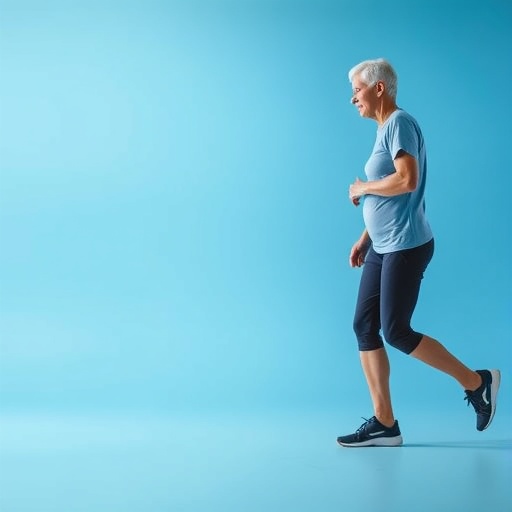Recent advances in the realm of physical therapy have highlighted the significant potential of multisystem exercises in managing chronic conditions, particularly in patients suffering from diabetes-related complications. In an innovative study led by Khurshid, Saeed, and Kashif, researchers sought to explore how these exercises can specifically affect balance, postural stability, mobility, walking speed, and pain levels in individuals diagnosed with diabetic peripheral neuropathy (DPN). This condition, a common complication of diabetes characterized by damage to the peripheral nerves, often leads to debilitating symptoms that severely impact the quality of life for many patients.
The randomized controlled trial conducted by the research team has become a focal point of discussion in the medical community, as it delves into the facets of physical rehabilitation that can potentially alleviate the burdens associated with DPN. The study involved carefully selected participants who exhibited varying degrees of neuropathic pain and mobility challenges. By implementing a structured program of multisystem exercises, the researchers aimed to examine not merely the physical benefits, but also the broader implications that improved balance and mobility can have on the psychological well-being of patients.
A key hypothesis of the study revolves around the idea that multisystem exercises, which engage multiple muscle groups and focus on enhancing functional movement, are superior to traditional rehabilitation methods in improving patient outcomes. By witnessing firsthand the intricacies of how these exercises restore balance and enhance mobility, the research team aimed to provide compelling evidence that could influence future rehabilitation protocols for diabetic patients.
Throughout the duration of the trial, participants engaged in a variety of exercises designed to stimulate neuromuscular components of their bodies. The workouts included strength training, flexibility exercises, and coordination drills—each meticulously chosen to challenge the participants while ensuring a safe level of exertion. The findings from the trial are expected to underline the importance of tailoring exercise programs to the unique needs of each patient, thereby enhancing the effectiveness of treatment modalities for diabetic neuropathy.
In particular, the investigation measured various parameters to assess improvement, including detailed balance assessments and mobility scores. Moreover, walking speed was documented, providing quantitative data that reinforces the necessity of tactical intervention in managing such a debilitating condition. Not only did these metrics serve as a benchmark for success in the study, but they also indicated the dynamic potential for improved locomotion and a reduction in fall risk among participants.
Furthermore, as the study progressed, attention was given to pain perceptions among participants. The interplay between physical activity and pain management continues to be a pivotal element in rehabilitation, and the results from this trial were anticipated to shed light on the degree to which exercise can provide relief from the chronic discomfort associated with peripheral neuropathy. Participants reported their pain levels before and after the intervention, offering a personal account of how their journey through structured physical activity influenced their everyday lives.
The outcomes of this research are expected to provide invaluable insights not merely for practitioners involved in physical therapy but also for the wider healthcare community addressing chronic conditions. With diabetes on the rise globally, effective management strategies have never been more critical, and this study could pave the way for integrating multisystem exercises into standard care protocols for patients with diabetic neuropathy.
Moreover, this research is timely, considering the increasing emphasis on non-invasive treatment strategies in managing chronic diseases. As healthcare systems search for cost-effective means to improve patient outcomes, studies like this one highlight the potential of exercise as a cornerstone of treatment that goes beyond mere symptom alleviation to foster long-term health benefits.
The implications also extend into the realms of public health policy, as findings could influence directives related to diabetes management and rehabilitation resources allocation. The study underscores the necessity for comprehensive programs that promote physical activity, emphasizing the need for multidisciplinary approaches that incorporate physiotherapists, endocrinologists, and nutritionists in the management of diabetic conditions.
Beyond the immediate health benefits experienced by participants, the study serves as a profound reminder of the potential for exercise to empower individuals. Through self-efficacy and improved physical prowess, patients may find themselves more invigorated to engage with their communities and pursue fulfilled lives, all while managing their diabetes effectively.
As the final analyses of the data unfold, the anticipation surrounding the results will undoubtedly attract attention from various domains, including academia, clinical practice, and even the everyday lives of those managing diabetes. With the looming prospect of publication, the hope is that this researchwill inspire a reevaluation of current practices, challenging healthcare professionals to think outside the box when addressing the multifaceted challenges posed by diabetic peripheral neuropathy.
In conclusion, the study led by Khurshid and colleagues exemplifies how rigorous research can not only contribute to academic discourse but also enact tangible change in everyday clinical practices. The significance of integrating multisystem exercises into rehabilitation for diabetic patients could herald a new era in managing neuropathic pain and enhancing the quality of life for countless individuals who suffer from the consequences of diabetes.
Subject of Research: The impact of multisystem exercises on balance, mobility, and pain in patients with diabetic peripheral neuropathy.
Article Title: Effects of multisystem exercises on balance, postural stability, mobility, walking speed, and pain in patients with diabetic peripheral neuropathy: a randomized controlled trial.
Article References:
Khurshid, S., Saeed, A., Kashif, M. et al. Effects of multisystem exercises on balance, postural stability, mobility, walking speed, and pain in patients with diabetic peripheral neuropathy: a randomized controlled trial. BMC Neurosci 26, 16 (2025). https://doi.org/10.1186/s12868-024-00924-6
Image Credits: AI Generated
DOI: https://doi.org/10.1186/s12868-024-00924-6
Keywords: Diabetic peripheral neuropathy, multisystem exercises, balance, mobility, pain management, randomized controlled trial.




